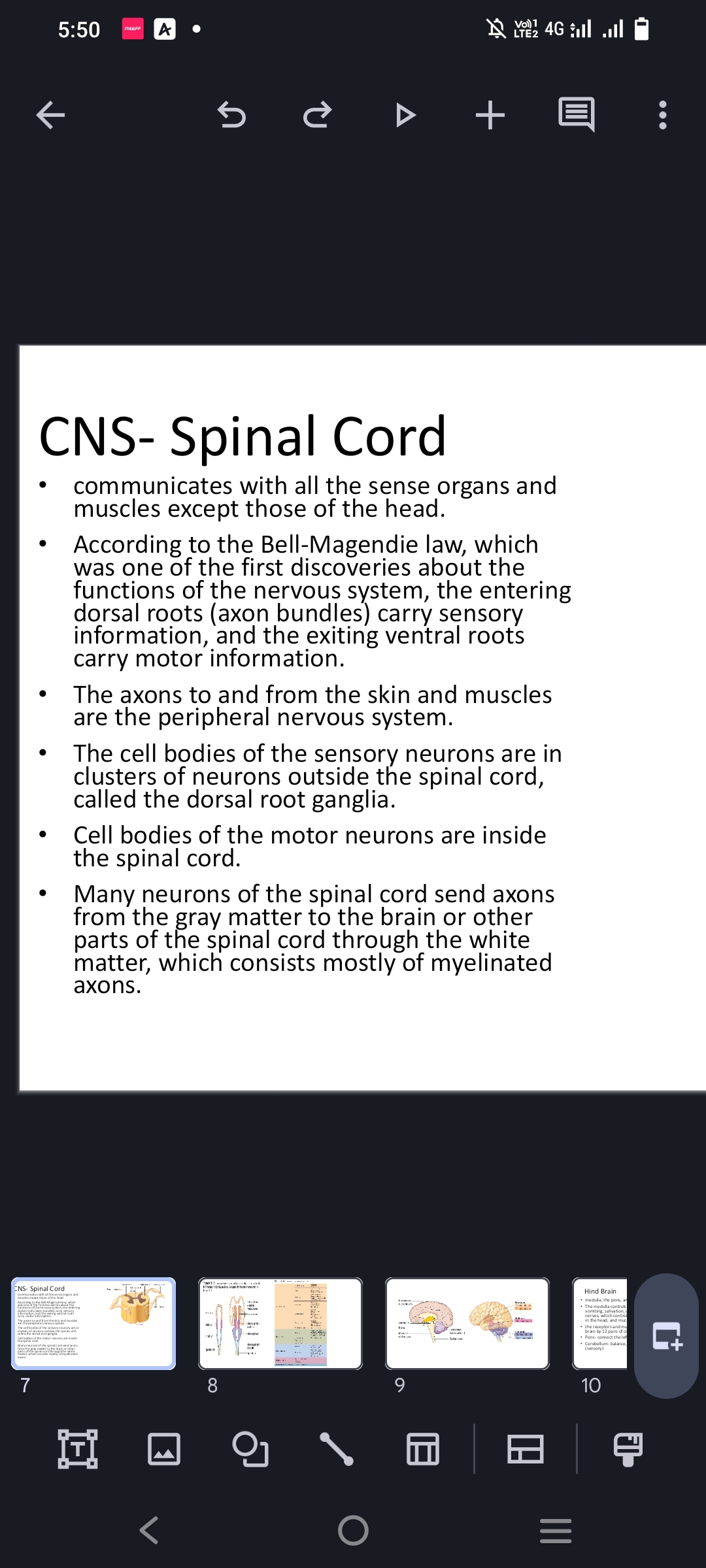Detailed information about the structure and function of the spinal cord.

Understand the Problem
The question appears to address the structure and function of the spinal cord and its relationship with the central and peripheral nervous systems, citing the Bell-Magendie law and the roles of sensory and motor neurons.
Answer
The spinal cord communicates between the brain and body, handling sensory and motor functions.
The spinal cord is a vital part of the central nervous system, allowing communication between the brain and body. It follows the Bell-Magendie law: dorsal roots carry sensory information, and ventral roots carry motor output.
Answer for screen readers
The spinal cord is a vital part of the central nervous system, allowing communication between the brain and body. It follows the Bell-Magendie law: dorsal roots carry sensory information, and ventral roots carry motor output.
More Information
The spinal cord transmits motor commands and sensory information, with sensory neurons' cell bodies in dorsal root ganglia. It plays a key role in reflex responses.
Tips
Confusing sensory and motor pathways can affect understanding. Remember: dorsal is sensory, ventral is motor.
Sources
- Spinal Cord - Anatomy, Structure, Function, & Diagram - BYJU'S - byjus.com
- Spinal cord: Anatomy, functions, and injuries - MedicalNewsToday - medicalnewstoday.com
- Anatomy and Function of the Spinal Cord - Verywell Health - verywellhealth.com
AI-generated content may contain errors. Please verify critical information